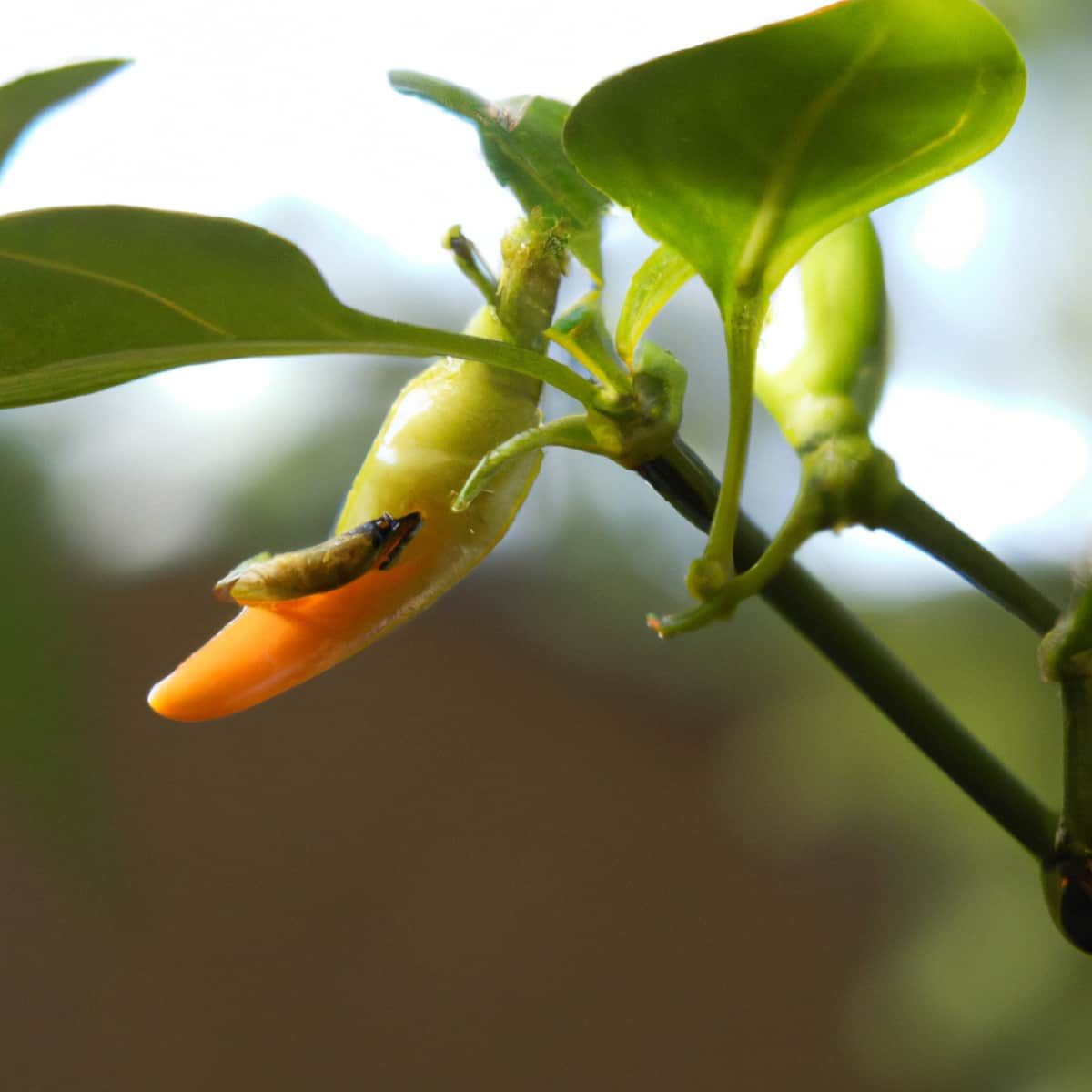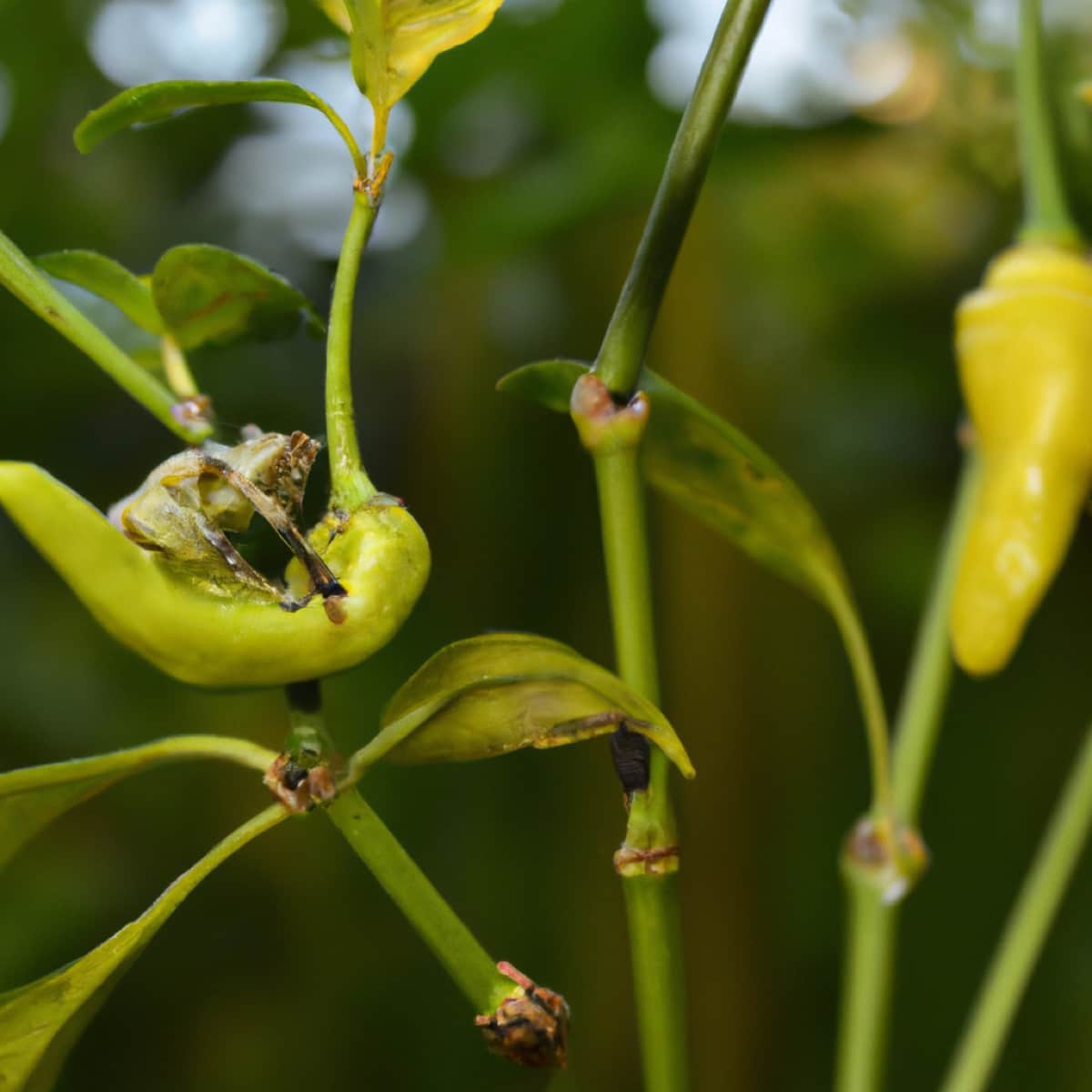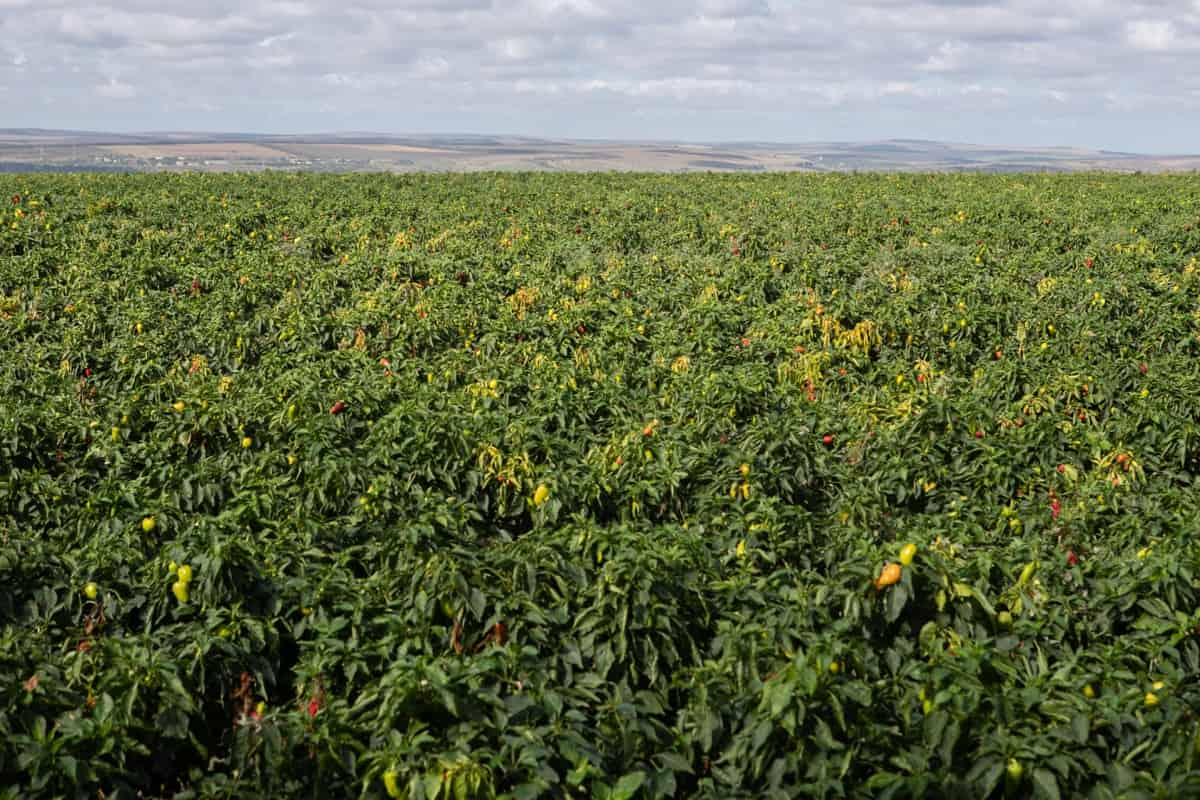The Chilli Fruit Borer, Helicoverpa armigera, belonging to the Family Noctuidae of the Order Lepidoptera, is a major pest that causes significant yield losses and reduces the quality of crops worldwide. This pest is also known as Leaf Feeder, Leaf-eating Caterpillar, Gram Caterpillar, or Gram Pod Borer. It is a highly destructive insect that feeds on the Chilli plant’s developing flowers, fruits, and pods.

This pest is a nocturnal moth whose caterpillars are the primary cause of damage to Chilli crops. It is a polyphagous pest that can adapt to different environmental conditions, making it difficult to control. Effective integrated pest management strategies are essential to minimize the impact of this pest on Chilli production.
To effectively manage this pest, it is important to understand its life cycle, its preferred habitats, and the best methods for controlling it. This article will provide an overview and discussion of the Chilli Fruit Borer Pest in Chilli crops, including its symptoms, identification techniques, and control.
Chilli Fruit Borer Pest Management
Life Cycle of Chilli Fruit Borer Pest in Chilli Crop
The life cycle of the Chilli Fruit Borer pest has four stages. They are egg, larva, pupa, and adult. The Chilli Fruit Borer moth lays eggs singly or in small clusters on the Chilli plant’s developing flowers, fruits, and pods. The incubation period of the eggs is 2-5 days, depending on the temperature and humidity. The newly hatched caterpillars feed on the Chilli plant’s developing pods, flowers, and fruits. The larvae undergo five to six instars before entering the pupal stage.
The larval stage duration varies from 10-20 days, depending on the temperature and food availability. The fully grown larvae pupate in the soil or on the plant. The pupal stage is a resting stage where the insect undergoes metamorphosis and becomes an adult moth. The pupal stage lasts 7-14 days, depending on the temperature. The adult moth emerges from the pupa and is nocturnal. The female moth lays eggs on the Chilli plant, and the cycle continues.
Occurrence of Chilli Fruit Borer Pest in Chilli Crop
- Location of Chilli Fruit Borer pest: This pest infests Chilli crops in India, Bangladesh, Nepal, Africa, Sri Lanka, China, Thailand, Malaysia, Vietnam, Indonesia, the United States, Mexico, Brazil, Colombia, Ecuador, the Philippines, and Australia.
- Host range: The Chilli Fruit Borer pest infects crops like Chilli, Tomato, Cotton, Maize, Gram, Lablab, Safflower, Tobacco, Soybean, Groundnut, Cowpea, Sunflower, Sorghum, and Pigeon peas.
Factors Favoring the Population Increase of Chilli Fruit Borer Pest in Chilli Crop
- The pest is most active during the summer, where temperatures range from 25-35°C and high humidity levels favor egg hatching and larval development.
- The pest prefers to feed on young and tender plant tissues. Therefore, vegetative and early reproductive growth stages are more susceptible.
- The pest prefers soils rich in organic matter and moisture, making it easier for the pest to lay eggs and for the larvae to feed and develop.
- The pest is highly polyphagous. The presence of these alternative hosts can provide a continuous food supply for the pest, leading to a higher population.
- Poor soil fertility, inadequate irrigation, and improper pest management practices can lead to weaker and more vulnerable plants.
- Over-fertilization and over-watering can lead to excessive plant growth, attracting the pest.
Identification of Chilli Fruit Borer Pest in Chilli Crop
- Egg: The eggs are spherical and pale yellow, measuring approximately 1 mm in diameter.
- Larva: The larvae are cylindrical and have a light green to brownish-black body with longitudinal stripes. The body is covered with fine hairs, which give it a velvety appearance.
- Pupa: The pupae are oval-shaped and are covered with a thin cocoon.
- Adult: The moth has a wingspan of 32-40 mm and has a brownish-grey color with dark wavy markings on the wings.
Damage Symptoms of Chilli Fruit Borer Pest in Chilli Crop
- The characteristic symptom of this pest is that the larvae feed on the developing pods, causing them to drop prematurely, reducing the size and quality of the Chilli fruits and making them unsuitable for sale.
- The early larval instars feed on foliage at flowering stages, whereas the grown-up larvae mainly bore into the fruits.
- Chilli fruits with bored holes and damaged leaves, shoots, and buds can be seen.
- These caterpillars feed on the pulp and young seeds inside the fruits.
In case you missed it: Leaf Curl Management in Chilli/Peppers: Symptoms, Treatment, Chemical, Biological, Natural, and Organic Control

Percentage of Yield Loss in Chilli Due to Chilli Fruit Borer Pest
- In India, the yield losses due to Chilli Fruit Borer pests are 60%. In Bangladesh, the losses are 80%. In Nepal, the losses are 50%. In Thailand, the yield loss is 60%. In Malaysia, it is 80%. In Vietnam, the losses are 70%. In Sri Lanka, the losses are 50%. In Indonesia, the losses are 50%. In Africa, it is 80%. In the United States, it is 40%. In Mexico, it is 50%. In Brazil, it is 70%. In China, it is 30%.
- In Colombia, the losses are 80%. In Ecuador, it is 70%. In Australia, it is 50%. In the Philippines, the yield losses are 60%. The Economic Threshold Level (ETL) for the Chilli Fruit Borer pest is set at 1-2 larvae per plant.
Cultural Control of Chilli Fruit Borer Pest in Chilli Crop
- Destroy the crop residues left in the field after harvesting, which can serve as a source of food and shelter for the pest.
- Inter-cropping Chilli crops with other crops such as maize, beans, or soybeans can help to reduce the pest population. The pest may find locating and attacking the Chilli plants difficult when intercropping with other crops.
- Control the weeds effectively, as they can provide a suitable environment for the pest to breed and grow.
- Deep plowing can help to reduce the pest populations in the soil by exposing the pests’ pupae to predators, parasites, and adverse environmental conditions.
- Maintaining proper irrigation and fertilization practices can help reduce plant stress and increase their resistance to pest infestation.
- Collecting and destroying the affected fruits and different life stages of the insect pest by hand can help reduce the pest populations.
Biological Control of Chilli Fruit Borer Pest in Chilli Crop
- Parasitoids such as Bracon hebetor and Trichogramma chilonis lay their eggs on or inside the pest. They consume the pest larvae, eventually killing them.
- Predators like spiders, earwigs, and ground beetles are natural enemies that feed on the pest.
- Pathogens such as Bacillus thuringiensis (Bt) and nuclear polyhedrosis virus (NPV) infect the pest larvae, causing them to die.
Chemical Control of Chilli Fruit Borer Pest in Chilli Crop
- Spray insecticides on the crops like Fipronil, HaNPV, Indoxacarb, Cypermethrin, Imidacloprid, Thiamethoxam, Deltamethrin, Permethrin, Chlorpyriphos, Carbaryl, Malathion, Methomyl, Novaluron, and Thiodicarb on the foliage to control the pest.
- Poison Traps – Apply baits with Rice bran, Jaggery, and Carbaryl, and spray the solution to kill the pest.
Organic Control of Chilli Fruit Borer Pest in Chilli Crop
- Plant extracts from neem, garlic, tobacco, cinnamon, ginger, turmeric, hot pepper, and Chilli can be applied to manage the infestation.
- Spray Cotton Seed Oil to kill the pests’ larvae.
- Spinosad produced by the soil bacterium Saccharopolyspora spinosa should be sprayed on the leaves and stems of Chilli plants to control the pest.
Preventive Measures for Control of Chilli Fruit Borer Pest in Chilli Crop
- Trap Crop – Planting trap crops such as sorghum, millets, or pigeon peas can help to reduce the pest population in Chilli crops.
- Pheromone Trap – Place the pheromone traps with Helilure to lure the pests away from the crops.
- Crop Rotation – Alternate Chilli crops with non-host crops, such as legumes, cereals, or vegetables, to disrupt the pest’s life cycle.
- Early Sowing – Early sowing of Chilli crops can help to avoid the peak pest population, reducing the damage caused by the pest.
- Monitoring – Monitor the crops regularly to identify pest infestation in the early stages to keep it under control.
In case you missed it: Mosaic Complex Management in Chilli: Symptoms, Treatment, Chemical, Biological, Natural, and Organic Control

Conclusion
The Chilli Fruit Borer Pest, Helicoverpa armigera, is a serious pest that affects Chilli production worldwide, causing significant yield losses and economic damage. Implementing an integrated pest management approach, combining cultural, biological, chemical, and preventive control measures, can effectively manage the Chilli Fruit Borer Pest and minimize its impact on Chilli crops.
- Types of Fungicides Used in Agriculture
- Common Issues in the Fruit Development Stage of Pomegranate Farming
- Fruit Development Issues in Papaya: Easy Solutions and Treatment
- Soil-Borne Diseases and How to Protect Your Plants
- Practices to Prevent Disease Spread in the Garden
- From Wilted to Thriving: How to Treat Root Rot Naturally in Houseplants
- Natural Remedies to Cure Brown Spots on Fig Tree Leaves
- Natural Solutions for Poinsettia Problems: 100% Effective Remedies
- How to Control Calla Lily Problems: Natural Remedies for Leaf and Flower Problems